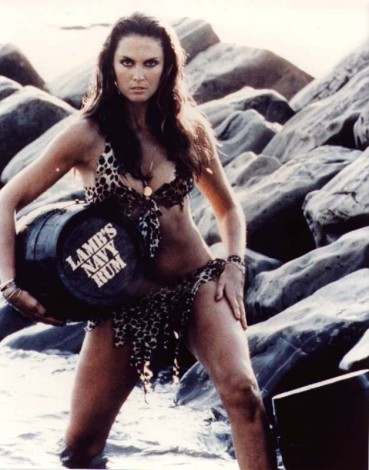 With Bogart and Bacall in the starring roles an unusual fugitive movie takes flight. 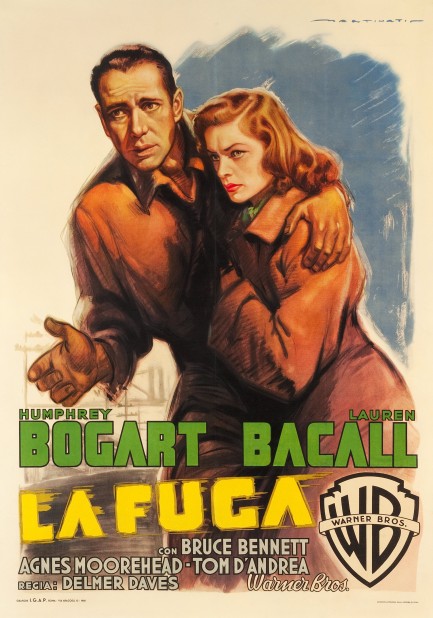
This beautiful poster for La fuga was painted by Italian artist Luigi Martinati, and you doubtless recognize Humphrey Bogart and Lauren Bacall. They starred in four movies together and had a dual cameo in a fifth. This promo was made for their fourth outing Dark Passage, retitled to “the escape” in Italy. And therein lies the plot. Bogart breaks prison and undergoes a backalley cosmetic surgery procedure on his face in order to evade the cops and have a chance to solve the crime for which he was unjustly sent up the river. The filmmakers decided to use the gimmick of having the first section of the film in Bogart-vision—i.e. first person pov until he gets his new face. It makes sense. Otherwise they'd have needed to have another actor play pre-surgery Bogart, or have resorted to clunky make-up and prosthetics. Bacall co-stars as unlikely shelter and succor, plus the prospect of love—if Bogie can survive. It's a good movie.
But we're going to tack upwind at this point and suggest that Dark Passage, while good, isn't as scintillating as its reputation. Certainly it isn't in the class of To Have and Have Not, Key Largo, or The Big Sleep. But hey—it stars B&B, and that's all audiences of the era really cared about. Three years into her film career Bacall had grown into superstardom—or stardom as it was called back then—and dished out a performance here that did plenty with a thin script and a belief defying scenario. The other star here is San Francisco, where most of the movie was shot. The city appeared in many period productions, but we can't think of it ever being used to such an extent as in Dark Passage. Since we lived across the Bay in Berkeley for a couple of years, we got to know San Fran well and it's fun to see it as it once was. Dark Passage—slightly overrated and all—is fun too. It premiered in the U.S. in 1947 and reached Italy today in 1948.
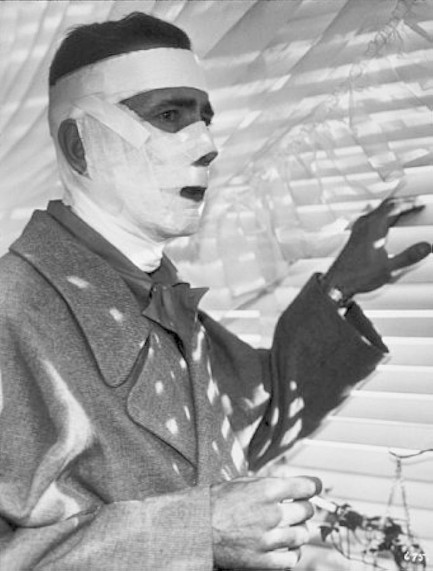 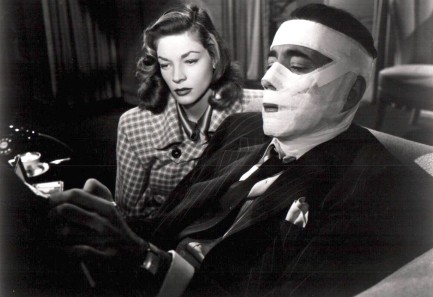 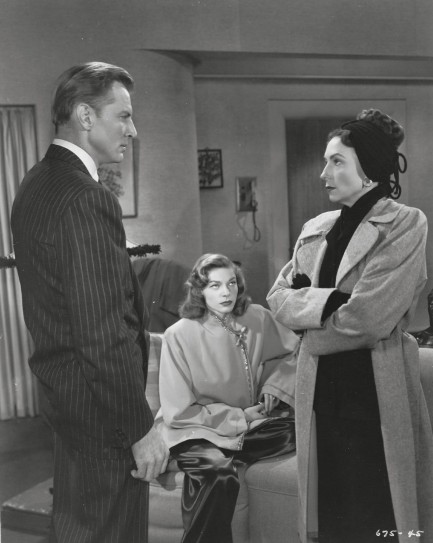 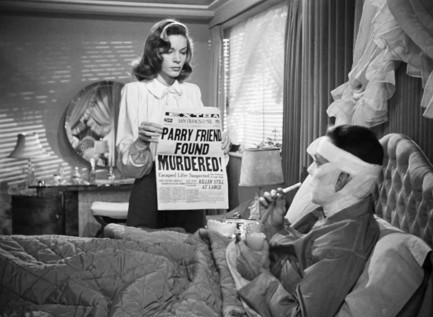 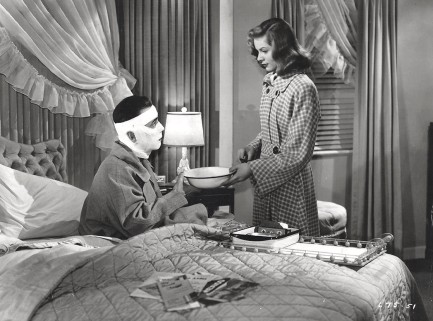 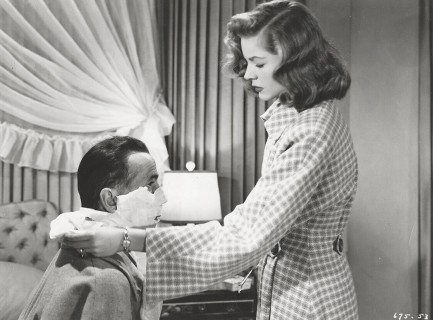 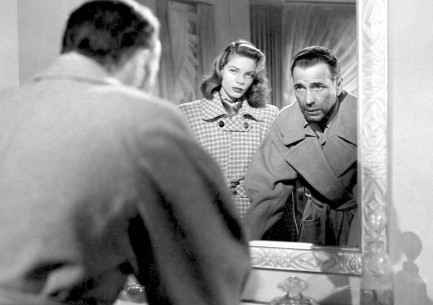  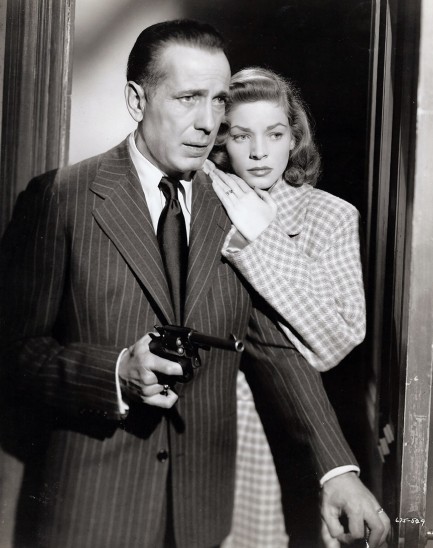 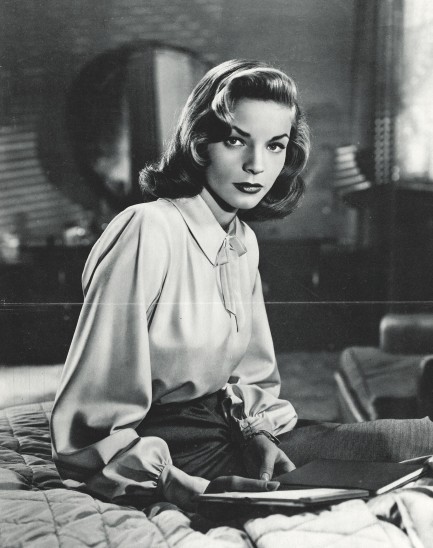 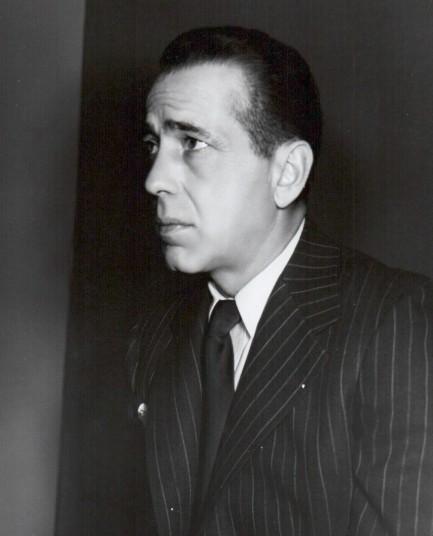 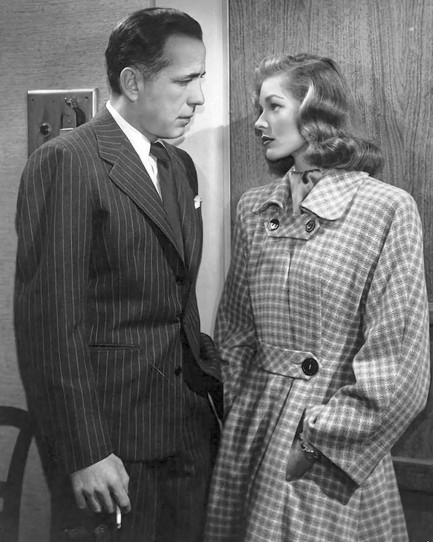 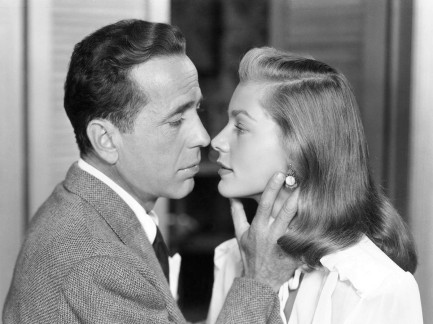
 He was honest. Everyone else made the mistake. 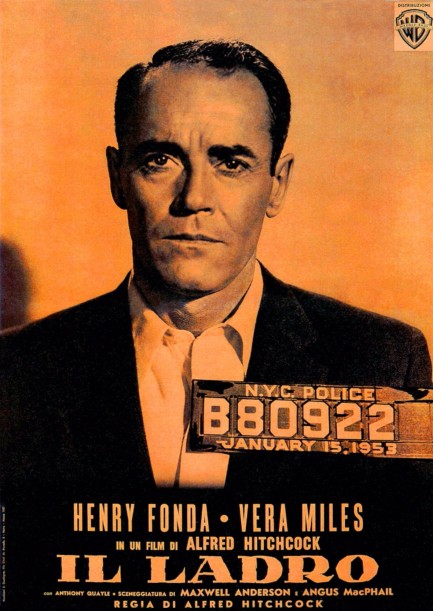
An array of posters were made for Alfred Hitchcock's crime drama The Third Man, which was titled in Italy simply Il ladro—“the thief”—but we've chosen this unusual mugshot based promo because it encapsulates the film nicely. The tired look on star Henry Fonda's face says it all. He's mega-screwed. There are probably other movies that took the mugshot route with their poster art, but we can't remember seeing any examples. For Il ladro, the mugshot poster was part of a series of photo promos taken from various frames in the film, but today we'll just share the one above. Also, below you'll see two more Italian posters painted by Luigi Martinati. It's rare that we prefer photo art to paintings, but this case, because of the subject matter of the film, is one of those exceptions.
Said subject matter is the true tale of Emmanuel Balestrero, an everyman who is falsely identified as an armed robber. This leads to his arrest, ordeal in jail, trial, and retrial. The movie hails from a more naive time, before Americans realized that when the police come asking questions the only answer you give is: “Am I under arrest?” And if the answer is yes, the next thing you say is: “Lawyer,” and that's all you ever say. It's crucial never to talk, because in the U.S. cops are allowed to lie to you, claim there are witnesses that don't exist, or that there's evidence they don't really have. That isn't legal in England, Australia, New Zealand, and many other countries. But Fonda doesn't know any of that, and ultimately that's largely why he ends up behind bars.
After he makes bail he and co-star Vera Miles pound the pavement investigating the false accusation. We doubt that happened in real life, but that's the movies for you. Their amateur sleuth bit works fine narratively. There's a psychological digression that's less compelling, but was included because it was part of the true story. On the whole, though, we like the movie. And we like Hitchcock's style here during his middle phase (he began directing in 1922 and finished in 1976), before high concept thrillers like Vertigo and Rear Window—though those are also good. Here he keeps it mostly basic, and the result is a harrowing drama, which is hard to bear as Fonda is slowly railroaded, but is extremely well put together and compellingly acted. The Wrong Man premiered in the U.S. in 1956 and reached Italy today in 1957.
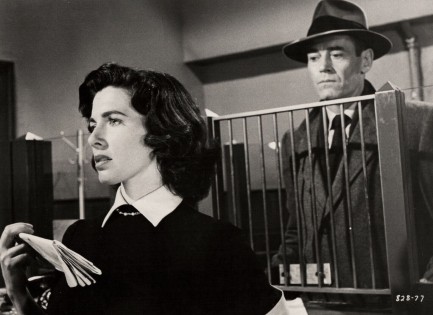 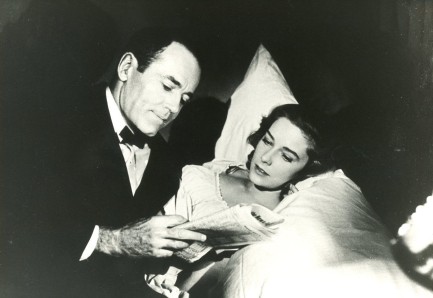 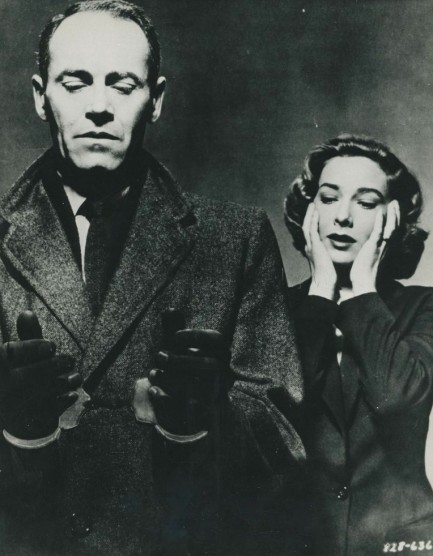 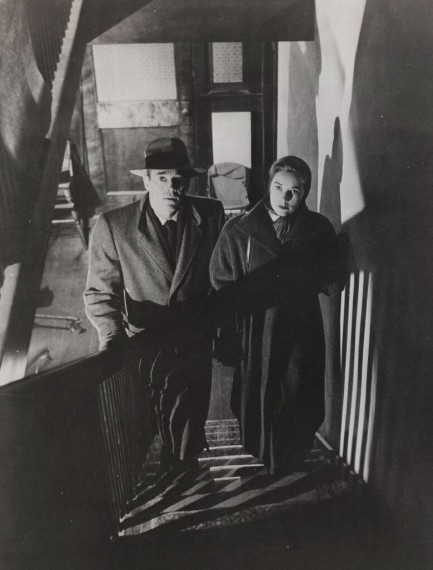 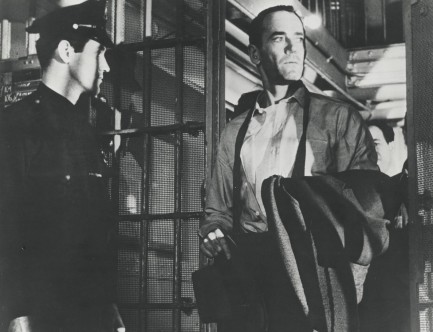 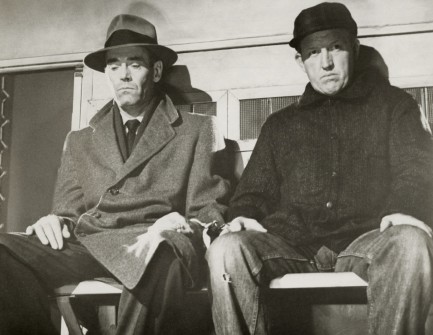 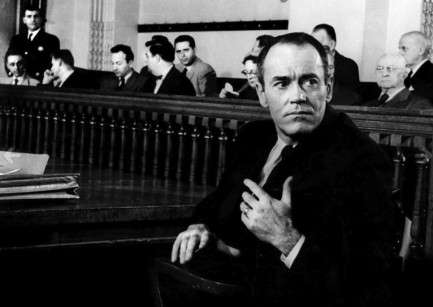 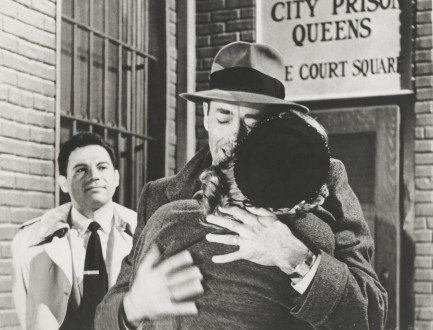 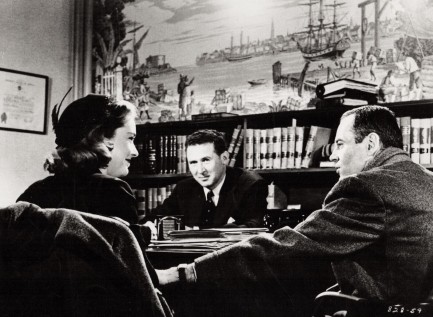 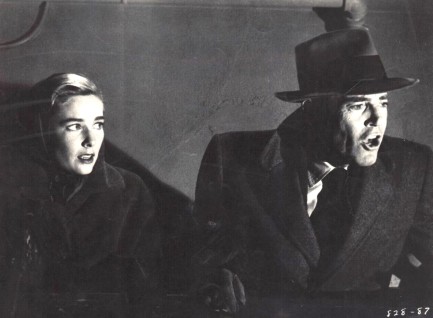 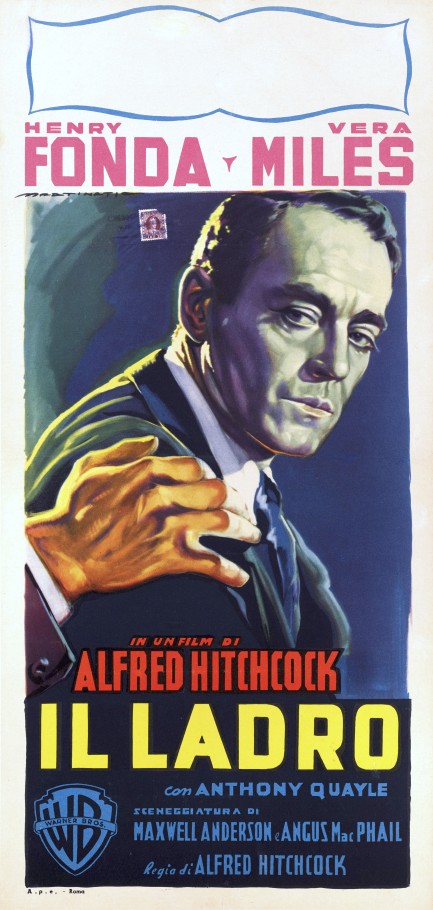 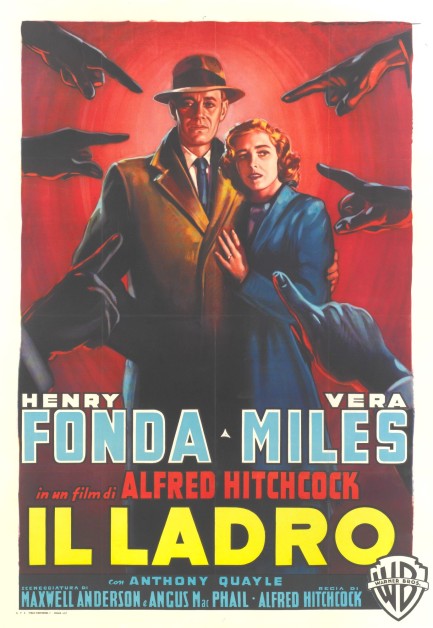
 All Through the Night is Bogart at his best. 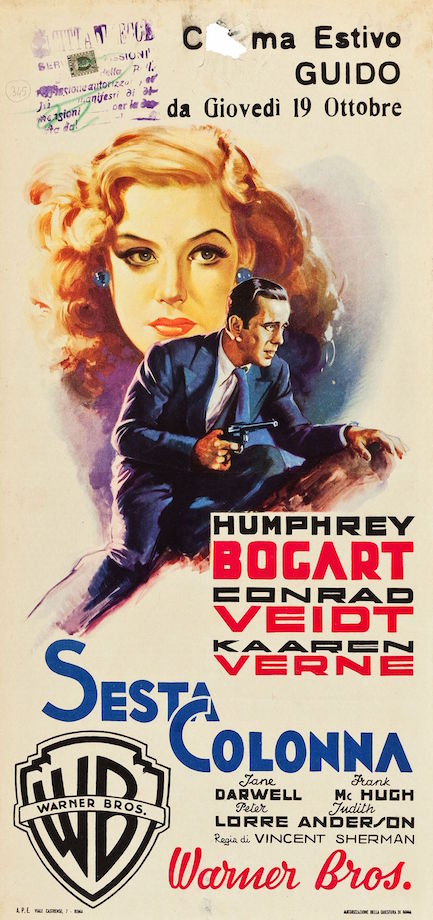
There's no single movie that made Humphrey Bogart a superstar—he built his brand with each outing. But surely All Through the Night was one of his most important pre-icon roles. You see its Italian promo poster above, which was painted by the great artist Luigi Martinati. We've featured Martinati often, and you can see his work here and here. After originally opening in the U.S. in 1942, All Through the Night premiered in Italy as Sesta colonna today in 1949. You can read more about the film here.
 Bogart and Bacall mix love and career. 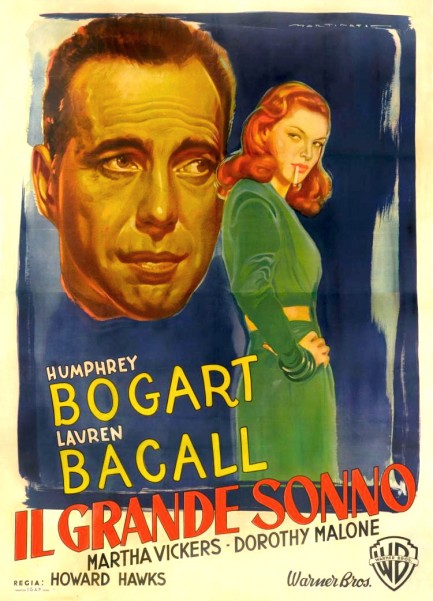 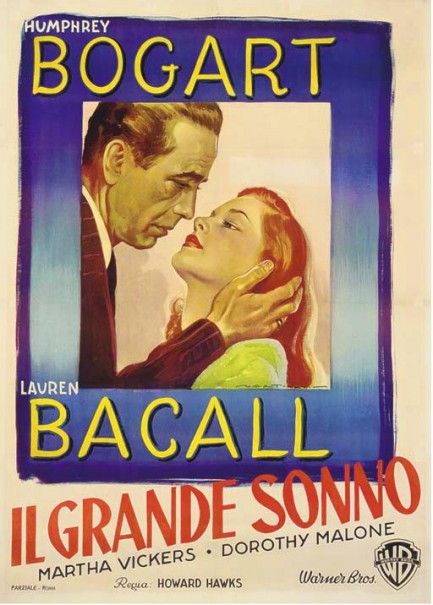
Above, two Luigi Martinati posters for Il grande sonno, aka The Big Sleep, with stars and spouses Humphrey Bogart and Lauren Bacall. These posters are more colorful than the U.S. versions because Warner Brothers had cut back on printing costs due to World War II. But when the film came out in Italy today in 1947 a full palette of color had returned to the mix. See a small collection Martinati's great work here.
 It's always the person you least suspect. 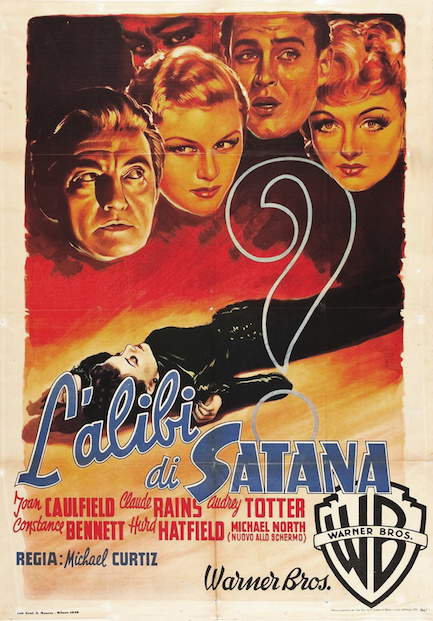 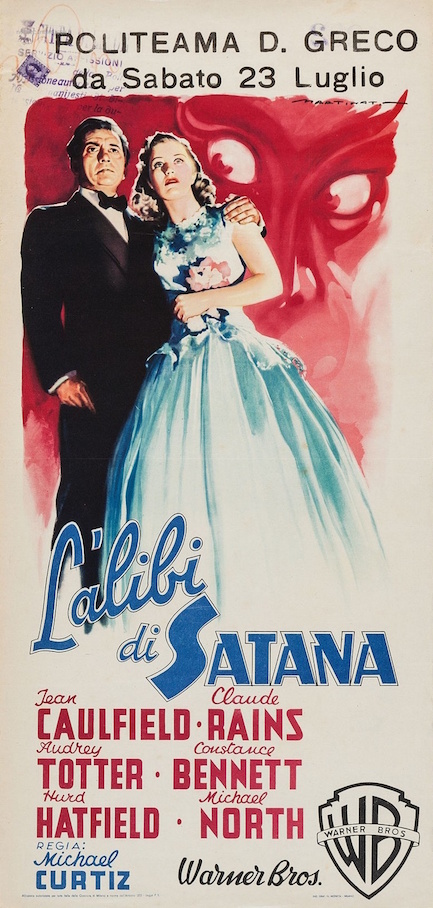
Above are a couple of beautiful Italian posters for L'alibi di Satana, better known as The Unsuspected. The set-up of this is too complicated to explain in the short form we use here on Pulp intl., but basically it's a murder mystery dealing with family jealousy, thwarted romances, inherited money, and amnesia. Despite the complexity of the script, which is derived from a Charlotte Armstrong novel, thanks to the title you can guess who the killer is by ignoring all the clues and simply picking the person with the best alibi. We know—that's a spoiler. But we bet 95% of you would have nailed it within twenty minutes anyway. The Unsuspected is still an interesting flick, though. The main attraction is Claude Rains, always great no matter the circumstances, and he's accompanied by Joan Caulfield, Audrey Totter, Constance Bennett, and others. It premiered in the U.S. in 1947, and opened in Italy today in 1949. 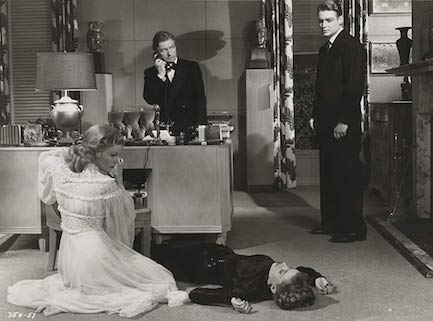 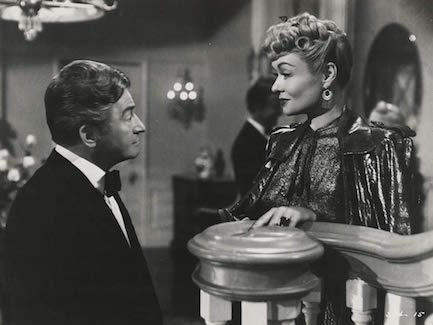 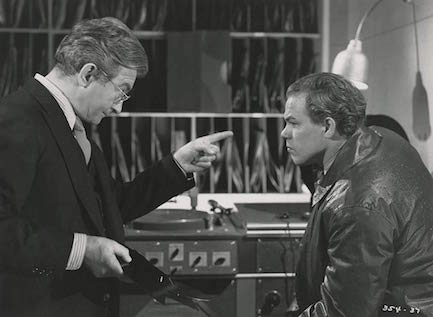 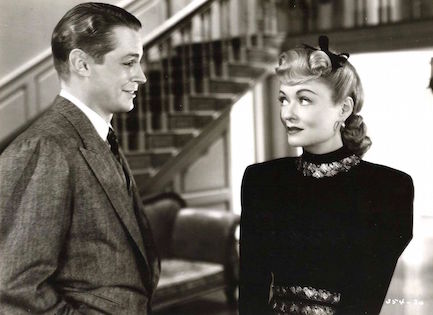 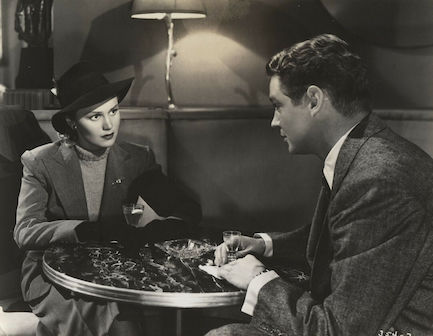 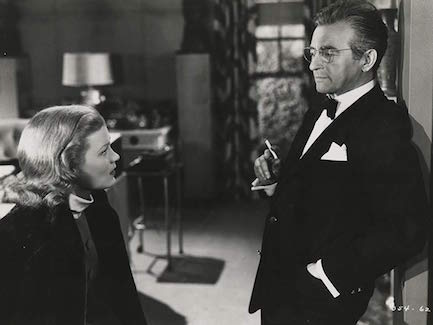
 She was more than just a movie star.
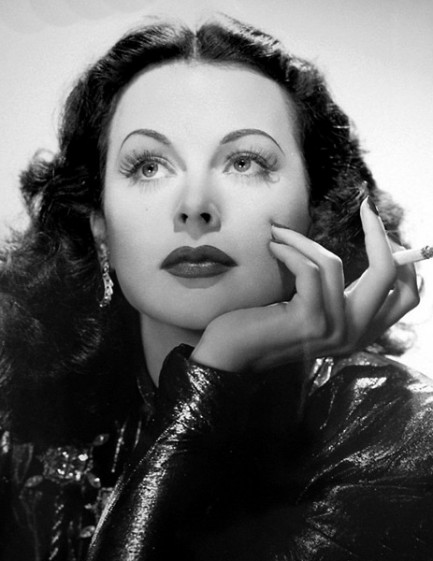 Smithsonian.com published an in-depth story yesterday about Austria-Hungary born Hollywood icon Hedy Lamarr, and how her technical genius helped bring the world Wi-Fi, Bluetooth, GPS, and cell phones. Hah! Get with it Smithsonian. We talked about this under-discussed aspect of her life years ago. Smithsonian.com published an in-depth story yesterday about Austria-Hungary born Hollywood icon Hedy Lamarr, and how her technical genius helped bring the world Wi-Fi, Bluetooth, GPS, and cell phones. Hah! Get with it Smithsonian. We talked about this under-discussed aspect of her life years ago. It's curious that no matter how many times people write about Lamarr's technological exploits it never seems to become a generally known aspect of her personality. Maybe people want to see her as a beautiful actress, and much of the interest stops there. The Smithsonian piece will probably help change that a bit, and it's well written also (though considering what digital technology has wrought we'd probably add the phrase "for better and worse").
Yesterday's piece comes in tandem with the Smithsonian's Washington D.C. based National Portrait Gallery acquiring a rare original Luigi Martinati poster painted to promote Lamarr's 1944 thriller The Conspirators. We have no idea what it cost, but certainly a pile of money, since Martinati was not just a great artist, but one who tended to focus more on portraiture in his promos. You can see what we mean just below, and by clicking here and scrolling. As for Lamarr, we'll doubtless get back to her—and all her interesting facets—later.
 I may be a bum but that's Sergeant Bum to you. 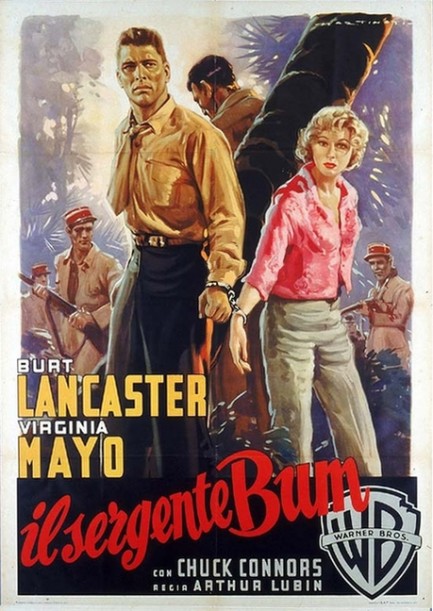
Above, an Italian promo poster painted by Luigi Martinati for the U.S. adventure flick South Sea Woman, with Burt Lancaster and Virginia Mayo. In Italy it was called Il sergente Bum! There's no Italian release date known. We did a little write-up of the film you can see at this link, and you can check out more of Martinati's brilliant brushwork here.
 Italian master’s genius spanned decades.
Back in August we showed you a poster from Luigi Martinati, who worked from 1923 to 1967, and said we'd get back to him. Below, seven more great promotional pieces with his distinctive signature on each.
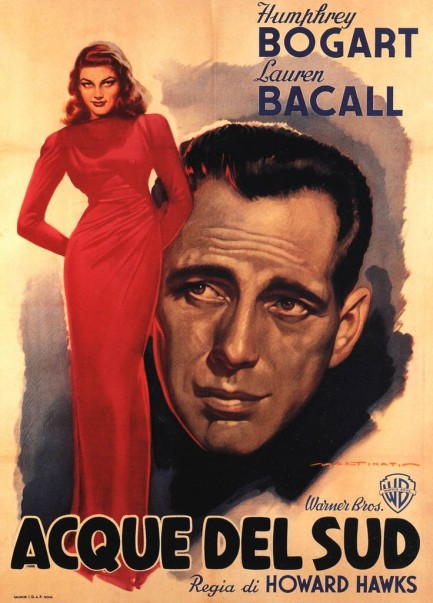 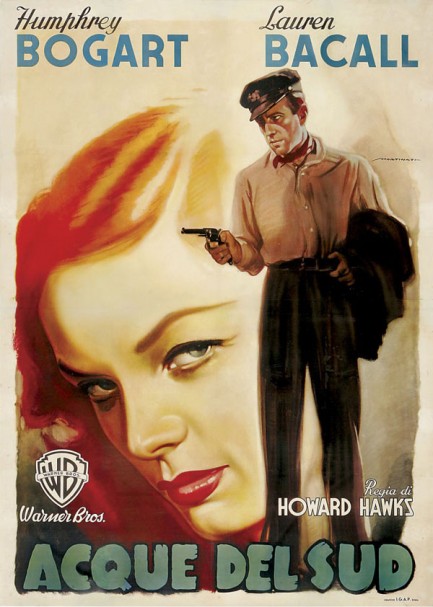
To Have and Have Not 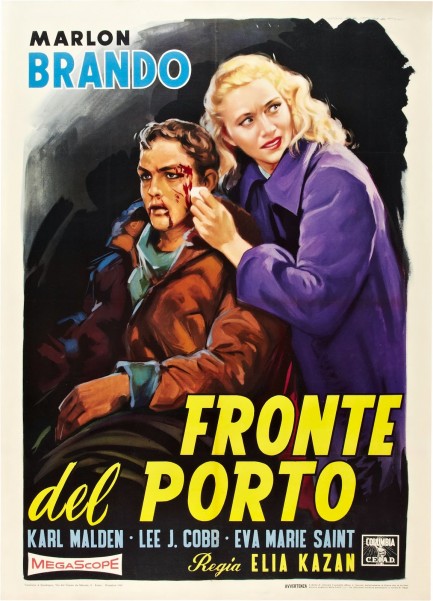
On the Waterfront 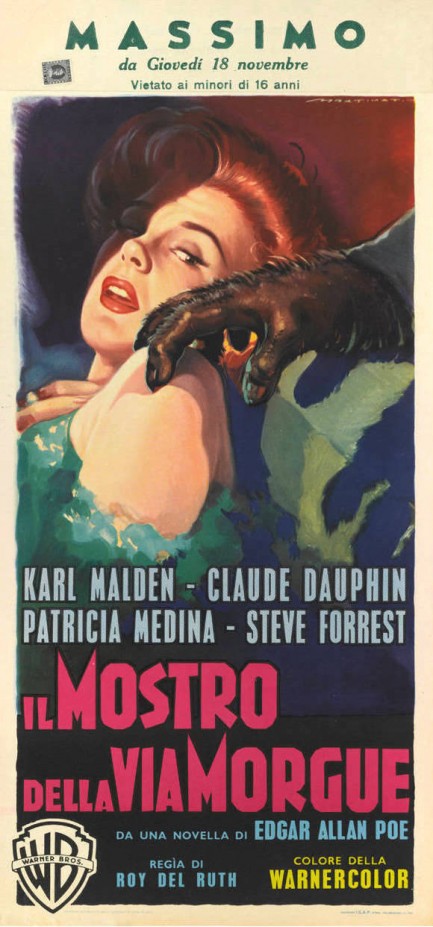
Phantom of the Rue Morgue 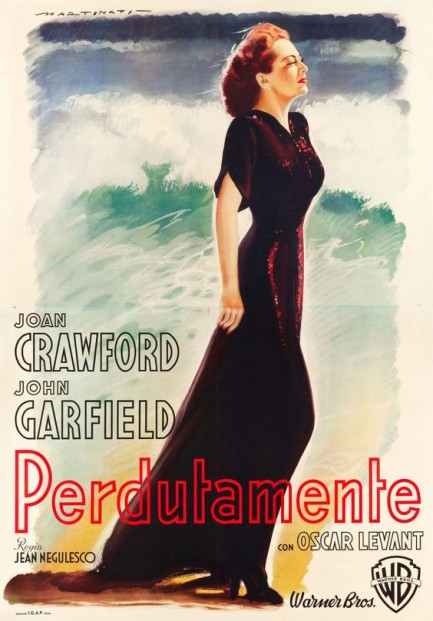
Humoresque 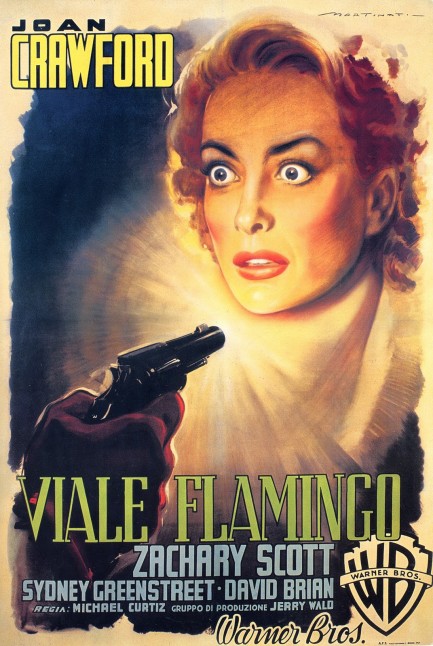
Flamingo Road 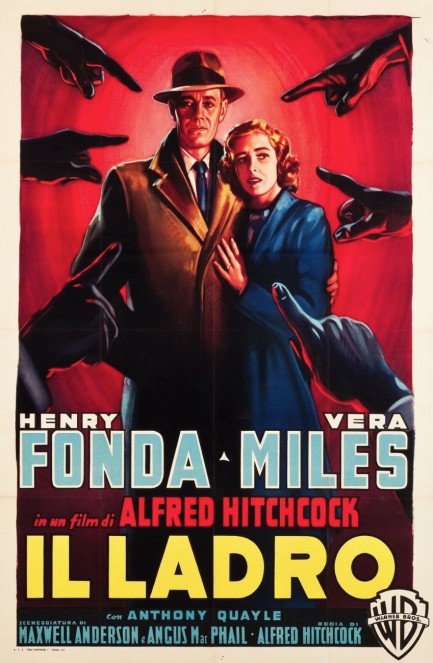
The Wrong Man
 In Cloak and Dagger Gary Cooper plays a physicist who causes a violent chain reaction of a different kind. 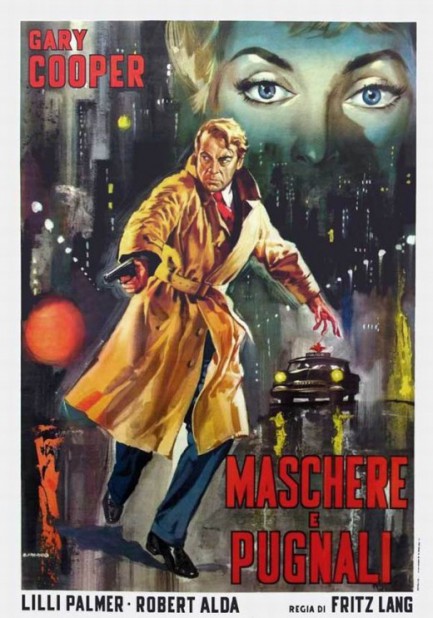 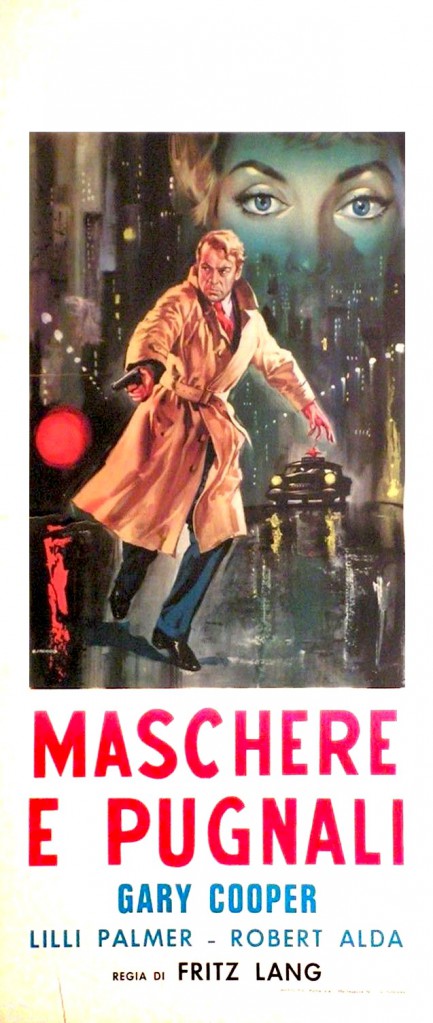 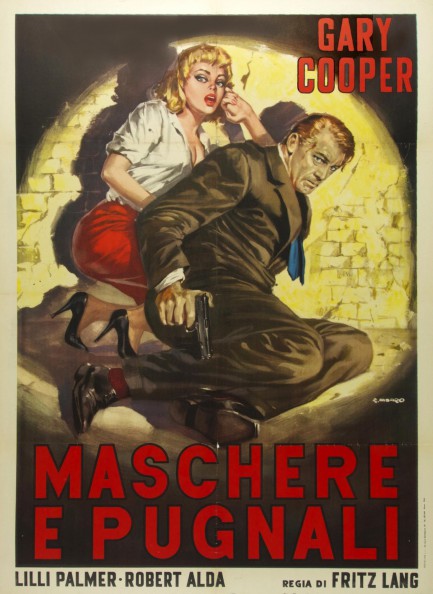
These posters promote the Italian run of the American War World II propaganda thriller Cloak and Dagger. The film even admits to being propaganda, with a dedication to the OSS in the ending credits. But since all states produce propaganda, and each generation’s is clumsy and laughable to those who come later, the silly flag waving here isn’t really the problem—rather it’s a tepid central romance, an unlikely plot, and an overcooked musical score that loudly punctuates every mood and movement of the characters. There are other flaws, especially with Gary Cooper’s fighting physicist, who begins the movie as a lab egghead but by the halfway point inexplicably unveils better fighting skills than the seasoned fascist killers on his trail. But whatever—willing suspension and all that. At least these action sequences are well staged—in fact, they’re the highlight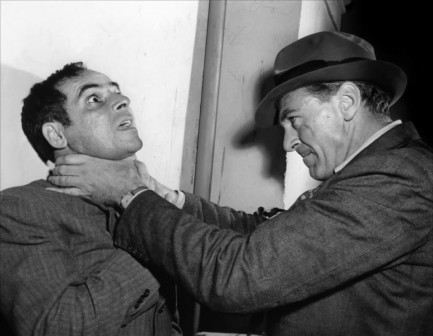 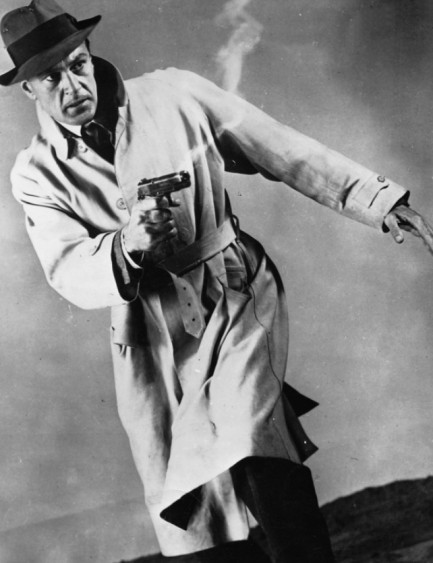 of the movie. And if you don't mind Coop's unsubtle moralizing about courage, country, sacrifice, and love, then Cloak and Dagger may hold some charms for you. For our part, we think seeing a cynic converted to the cause à la Casablanca is infinitely more interesting than a true blue patriot trying to convert others, but that’s the difference between drama and propaganda—in the latter the hero’s doubts are merely cursory if they exist at all. of the movie. And if you don't mind Coop's unsubtle moralizing about courage, country, sacrifice, and love, then Cloak and Dagger may hold some charms for you. For our part, we think seeing a cynic converted to the cause à la Casablanca is infinitely more interesting than a true blue patriot trying to convert others, but that’s the difference between drama and propaganda—in the latter the hero’s doubts are merely cursory if they exist at all. The promo posters above are by Renato Casaro, the one directly below is by Luigi Martinati, who we’ll revisit soon, and the last is illegibly signed, which means it goes into the unknown category. We’ll try to figure out who painted that and get back to you. Cloak and Dagger premiered in the U.S. in 1946 and made it to Italy as Maschere e pugnali today in 1948.
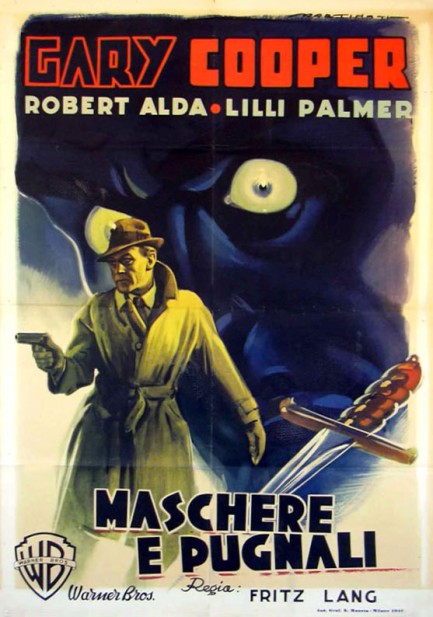 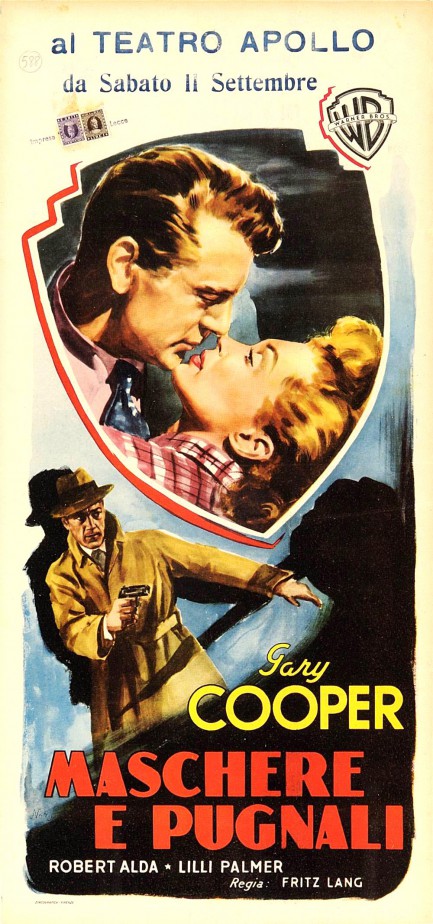
|
 |

The headlines that mattered yesteryear.
2003—Hope Dies
Film legend Bob Hope dies of pneumonia two months after celebrating his 100th birthday. 1945—Churchill Given the Sack
In spite of admiring Winston Churchill as a great wartime leader, Britons elect
Clement Attlee the nation's new prime minister in a sweeping victory for the Labour Party over the Conservatives. 1952—Evita Peron Dies
Eva Duarte de Peron, aka Evita, wife of the president of the Argentine Republic, dies from cancer at age 33. Evita had brought the working classes into a position of political power never witnessed before, but was hated by the nation's powerful military class. She is lain to rest in Milan, Italy in a secret grave under a nun's name, but is eventually returned to Argentina for reburial beside her husband in 1974. 1943—Mussolini Calls It Quits
Italian dictator Benito Mussolini steps down as head of the armed forces and the government. It soon becomes clear that Il Duce did not relinquish power voluntarily, but was forced to resign after former Fascist colleagues turned against him. He is later installed by Germany as leader of the Italian Social Republic in the north of the country, but is killed by partisans in 1945.
|

|
|

It's easy. We have an uploader that makes it a snap. Use it to submit your art, text, header, and subhead. Your post can be funny, serious, or anything in between, as long as it's vintage pulp. You'll get a byline and experience the fleeting pride of free authorship. We'll edit your post for typos, but the rest is up to you. Click here to give us your best shot.

|
|































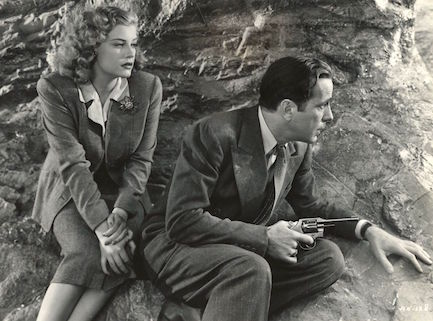
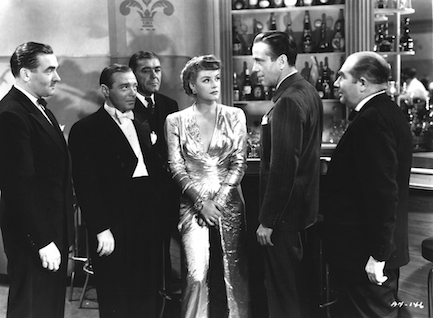
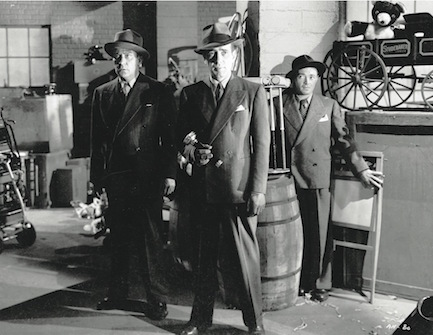
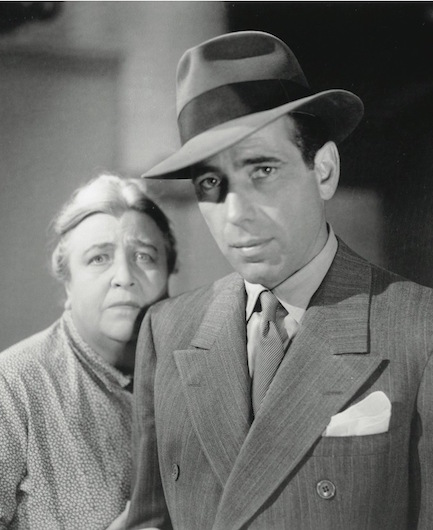
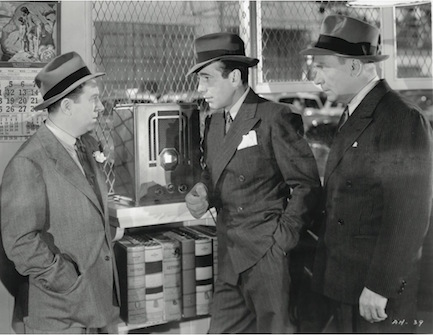

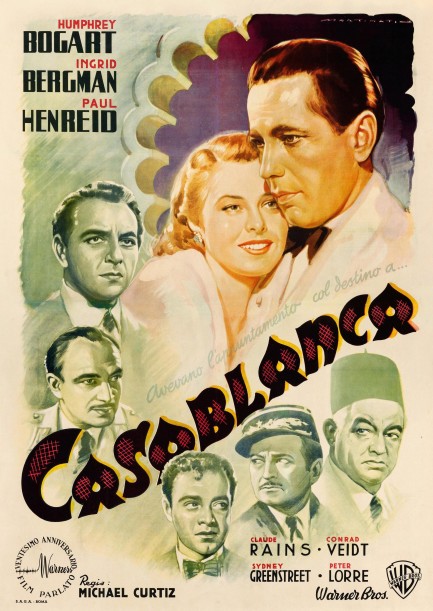
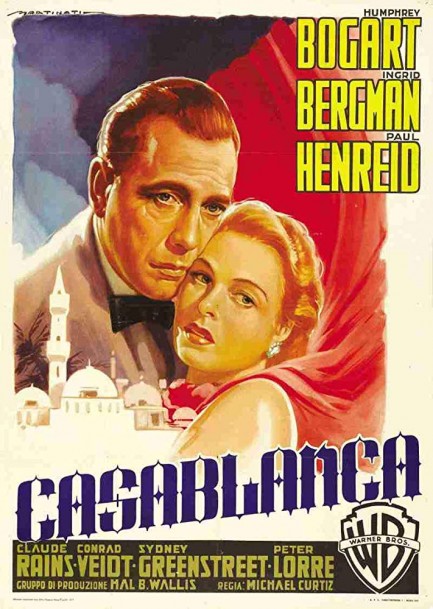
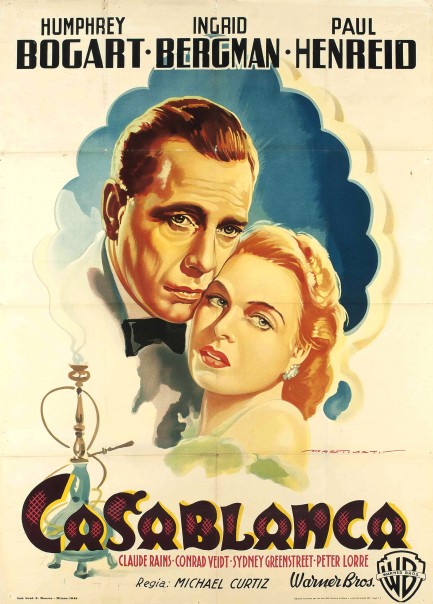
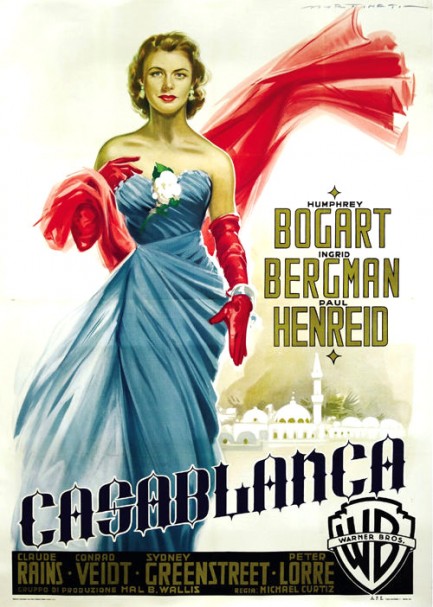
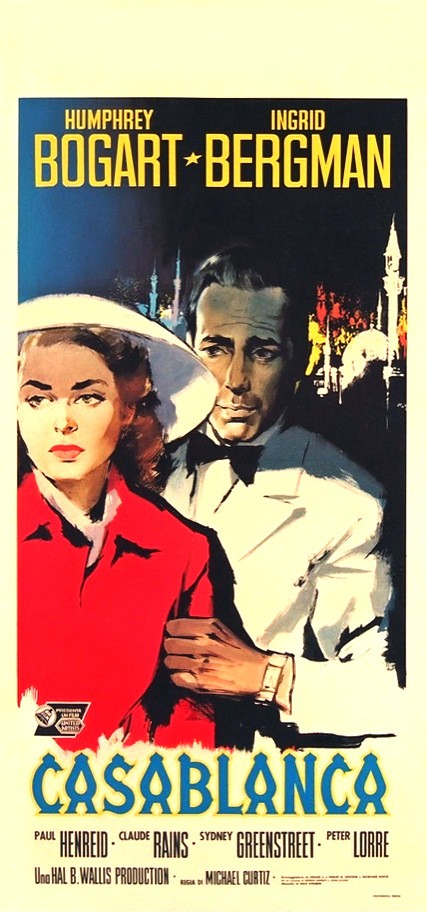
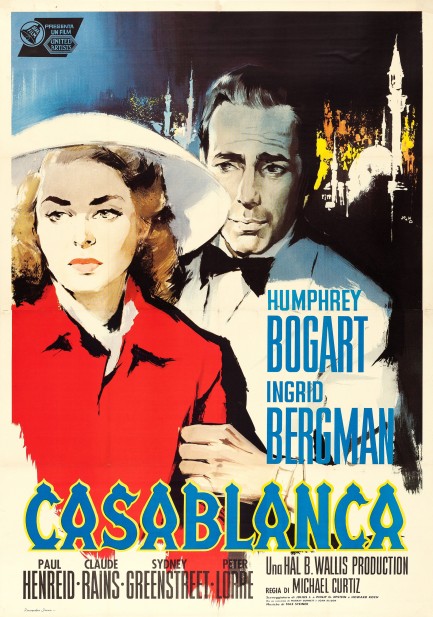
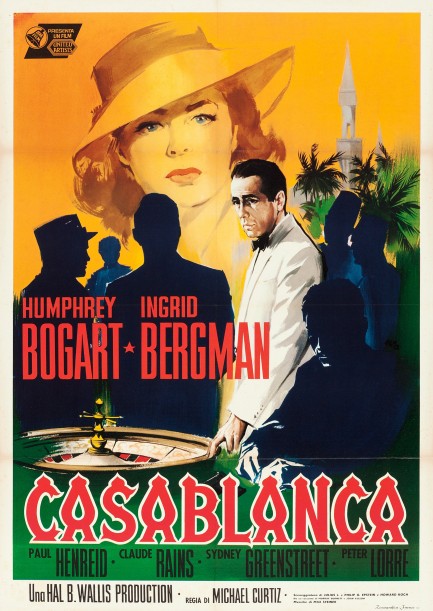













 Smithsonian.com published an in-depth story yesterday about Austria-Hungary born Hollywood icon Hedy Lamarr, and how her technical genius helped bring the world Wi-Fi, Bluetooth, GPS, and cell phones. Hah! Get with it Smithsonian. We talked about this under-discussed aspect of her life years ago.
Smithsonian.com published an in-depth story yesterday about Austria-Hungary born Hollywood icon Hedy Lamarr, and how her technical genius helped bring the world Wi-Fi, Bluetooth, GPS, and cell phones. Hah! Get with it Smithsonian. We talked about this under-discussed aspect of her life years ago.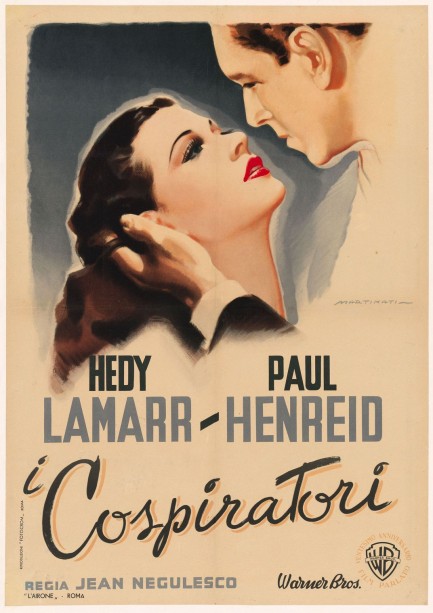















 of the movie. And if you don't mind Coop's unsubtle moralizing about courage, country, sacrifice, and love, then Cloak and Dagger may hold some charms for you. For our part, we think seeing a cynic converted to the cause à la Casablanca is infinitely more interesting than a true blue patriot trying to convert others, but that’s the difference between drama and propaganda—in the latter the hero’s doubts are merely cursory if they exist at all.
of the movie. And if you don't mind Coop's unsubtle moralizing about courage, country, sacrifice, and love, then Cloak and Dagger may hold some charms for you. For our part, we think seeing a cynic converted to the cause à la Casablanca is infinitely more interesting than a true blue patriot trying to convert others, but that’s the difference between drama and propaganda—in the latter the hero’s doubts are merely cursory if they exist at all.
































